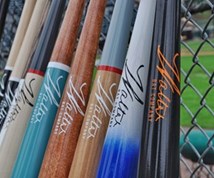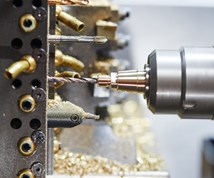Automating CNC Lathe Part Loading/Unloading
Read about how you can automate the loading/unloading of your CNC lathes to reduce the labor cost on longer running jobs.
If you have been thinking about automating the loading/unloading of your CNC lathes to reduce the labor cost on some of your longer running jobs, you may want to consider the parts loaders/unloaders made especially for such machines by Toellner Systems, Inc. (Wisconsin Rapids, Wisconsin). The part loaders offer 30 to 50 percent faster loading times than manual loading, enable the lathes to operate without operator attention for long periods of time and combine more consistent production with more accurate scheduling.
The loaders/unloaders can be retrofitted to machines from all or most of the major builders. According to the manufacturer, they are substantially less expensive than a gantry or a robot, and they typically pay for themselves in 12 months or less.
Featured Content
Toellner designs a custom parts loader for each customer based on considerations such as part size and shape, orientation, the need to invert the part, the need to protect the part from dings, and even the length of time the customer wants to be able to run the CNC lathe unattended. The customer’s particular requirements are further satisfied by matching various system options to the application. However, each parts loader is assembled from standard, modular components, which not only holds down costs but also enables the customer to modify the unit in-house for subsequent jobs.
The loader is mounted in front of the machine where the operator normally stands. A convenient floor mount allows the loader to swing away from the machine to provide access for setup changes and to accommodate short-run, manually-fed jobs.
Part catchers are available for applications that require more than simply discharging the machined parts to a tote or bin. The parts catcher is typically mounted inside the machine tool. The part slides down a chute that flips up under the tool as it is being cut off from the parent bar. Smaller parts exit the lathe into a tote or basket fastened to the door. A part exit conveyor may be used for larger parts and for fragile parts that might be nicked or scratched by coming into contact with other parts. The exit conveyor may also be used to deliver the part to a downstream operation.
As for the parts loader, the parts catcher is assembled from “easy-to-locate, non-proprietary” parts that make the system easy to repair and easy to modify in-house when the time comes to adapt the load/unload system to another, not-so-similar job.
RELATED CONTENT
-
Job Shop Automation: Fast, Simple and Agile
When done right, automation can provide important benefits. Here’s a look at automation options to suit the varying needs of typical job shops.
-
Checklist for Lights-Out Manufacturing
Many shops of various sizes are trying to hop on the lights-out bandwagon. This article looks at some things to consider and check out before “hopping.”
-
Bar Feeder Basics
Some primary factors are often overlooked when considering how to justify the implementation of a bar feeder for turning operations.









